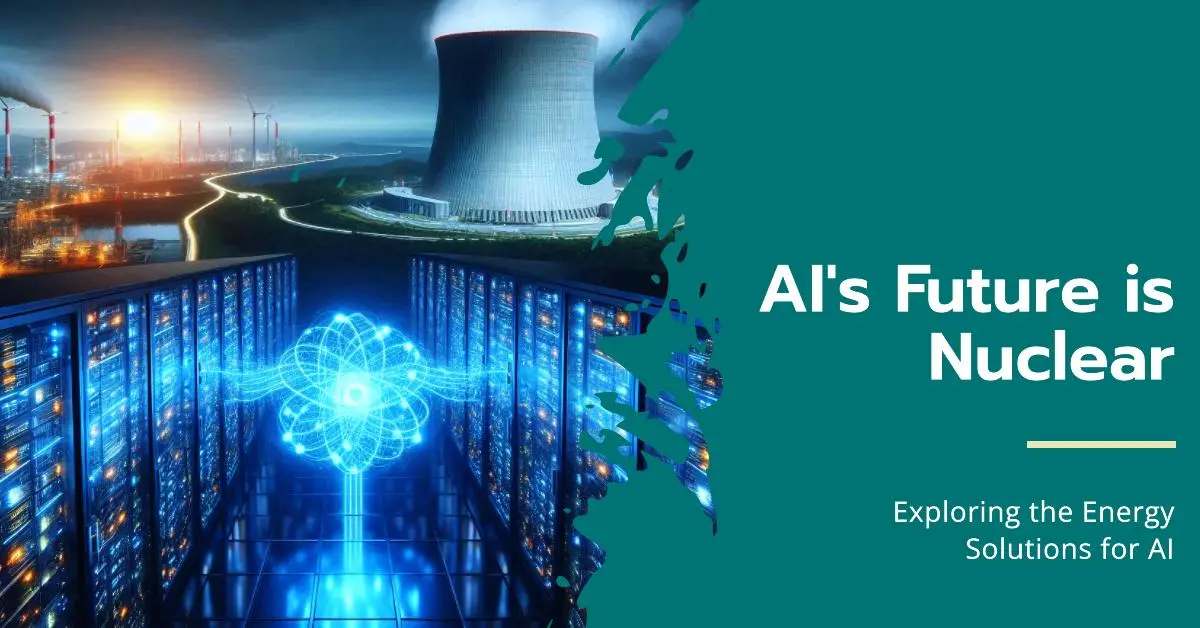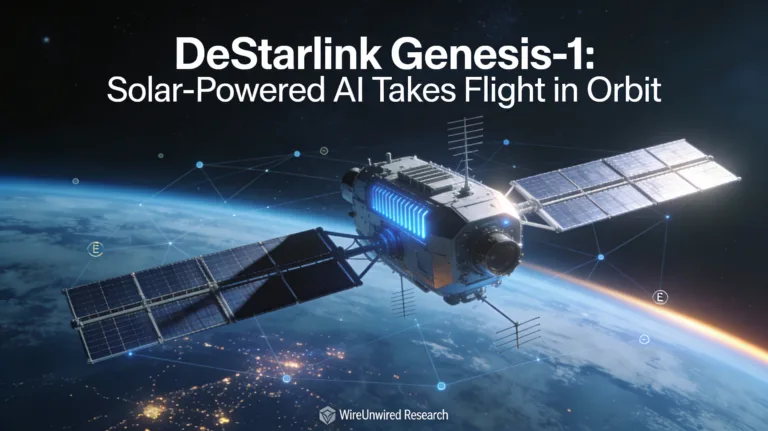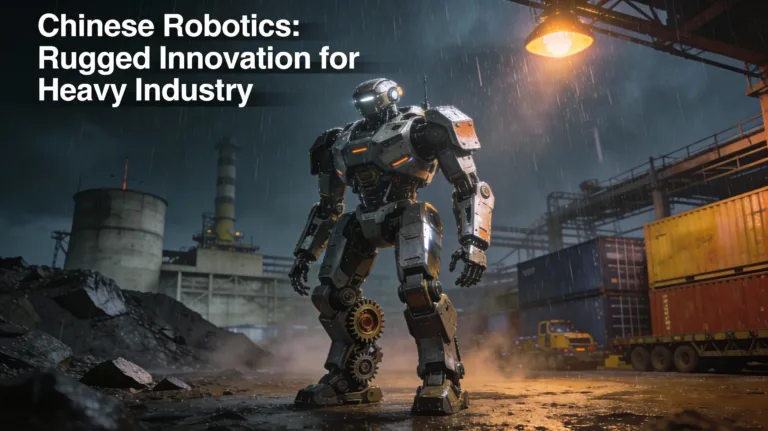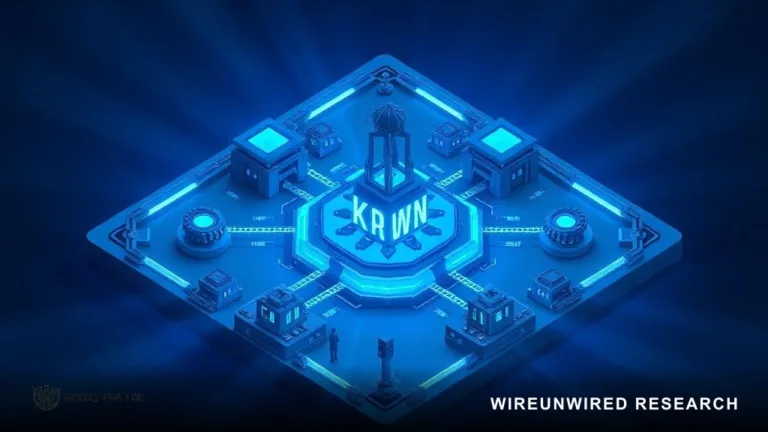As artificial intelligence (AI) continues its rapid evolution, the growing energy demands are creating new challenges for global power systems. AI’s power-hungry algorithms, data processing, and machine learning tasks are driving the need for innovative AI energy consumption solutions. One such solution, gaining traction in the tech world, is nuclear energy. From tech giants like Amazon and Google to emerging startups, the future of AI might well depend on the reliability of nuclear power to sustain its growth.
AI’s Exploding Energy Demands
AI is driving exponential increases in energy consumption, particularly in data centers. For example, the Vantage, a mere 16 MW data center in Taipei, is expected to consume as much energy as some 13,000 households .
Data centers alone globally consumed around 460 terawatt-hours (TWh) of electricity in 2022, and the figure is expected to skyrocket, surpassing 1,000 TWh by 2026, which is equivalent to the annual energy consumption of Japan. These data are enough to suggest that the need for AI energy consumption solutions has become critical. The International Energy Agency (IEA) predicts that without innovative solutions, AI-driven energy demands could triple by 2030, driven by advances in generative AI and other data-intensive applications.
Also Read :The Global Chip War: How U.S. AI Chip Bans Are Reshaping the $500 Billion Semiconductor Industry
AI’s Future is Nuclear.
The search for sustainable AI energy consumption solutions has led to renewed interest in nuclear power. Unlike renewable energy sources such as wind or solar, nuclear energy offers consistent, round-the-clock power—essential for data centers running 24/7. This makes it a perfect fit for the massive and constant energy demands of AI infrastructure.
Nuclear energy presents a viable path forward , offering both reliability and sustainability. With AI applications growing more complex, traditional power grids will struggle to meet the demand. The development of small modular reactors (SMRs)—which are safer, more flexible, and easier to integrate—offers a new approach to decentralized energy production. Tech giants could potentially operate their own nuclear reactors, fueling the future of AI directly.
Tech Companies Driving AI Energy Solutions
Major tech companies are already investing in nuclear power as part of their AI energy consumption solutions. For instance, Amazon has invested in small modular reactors (SMRs) through Kairos Power to explore cleaner, more reliable sources of energy. Similarly, Google has partnered with advanced nuclear startups to further diversify its energy mix and reduce its carbon footprint.
These companies are preparing for a future where AI energy consumption solutions like nuclear power will be essential.
Learning from Taiwan’s Nuclear Phase-Out Crisis
Where every country is seeing nuclear power as a sustainable and cheaper means of electricity , Taiwan has phased out all of its nuclear power plants, giving us a stark warning of what can happen when nuclear energy is phased out.
Taiwan, which consumed around 274 TWh of electricity in 2021 and is expected to consume twice as much electricity as did the whole of New Zealand in 2021 by 2030(source), has seen its energy mix shift dramatically as it shuts down nuclear reactors. Despite increasing electricity demand, the island has turned to fossil fuels, with coal and liquefied natural gas (LNG) now making up over 80% of Taiwan’s energy supply. Taiwan has become one of the largest per-capita carbon emitters in Asia, producing about 10 metric tons of CO2 per person per year. Projections show that Taiwan’s energy consumption will rise by another 15% by 2025 and could increase by 35% by 2040.
This not only has made Taiwan dependent on fossil fuels but also has made it vulnerable to fossil fuel supply drama.
In Taiwan’s case, as nuclear power plants have shut down, electricity prices have surged, increasing by 15% in recent years due to rising fuel import costs. The country now faces power shortages and rolling blackouts, a situation that could worsen without nuclear energy. For AI-driven industries reliant on stable and affordable energy, such instability represents a significant risk. The high cost and unreliability of power in Taiwan offer a lesson in what can happen when dependable energy sources like nuclear are phased out.
Also Read :Google finally ditches Samsung: TSMC to manufacture next gen Google Tensor chipsets.
Conclusions
As AI continues to revolutionize sectors from healthcare to autonomous vehicles, AI energy consumption solutions like nuclear power will be key to ensuring the technology’s growth without jeopardizing environmental goals. While nuclear energy has long faced public skepticism, the advancements in reactor design and waste management make it an attractive option for addressing AI’s energy needs.
By focusing on innovative solutions like nuclear power, the tech industry can ensure that the AI revolution is both powerful and sustainable. Taiwan’s experience serves as a cautionary tale: as the island turns away from nuclear energy, it is experiencing higher costs and greater risks to energy security. The lesson is clear—without innovative AI energy consumption solutions, the future of both AI and global energy stability remains uncertain.
Discover more from WireUnwired Research
Subscribe to get the latest posts sent to your email.




